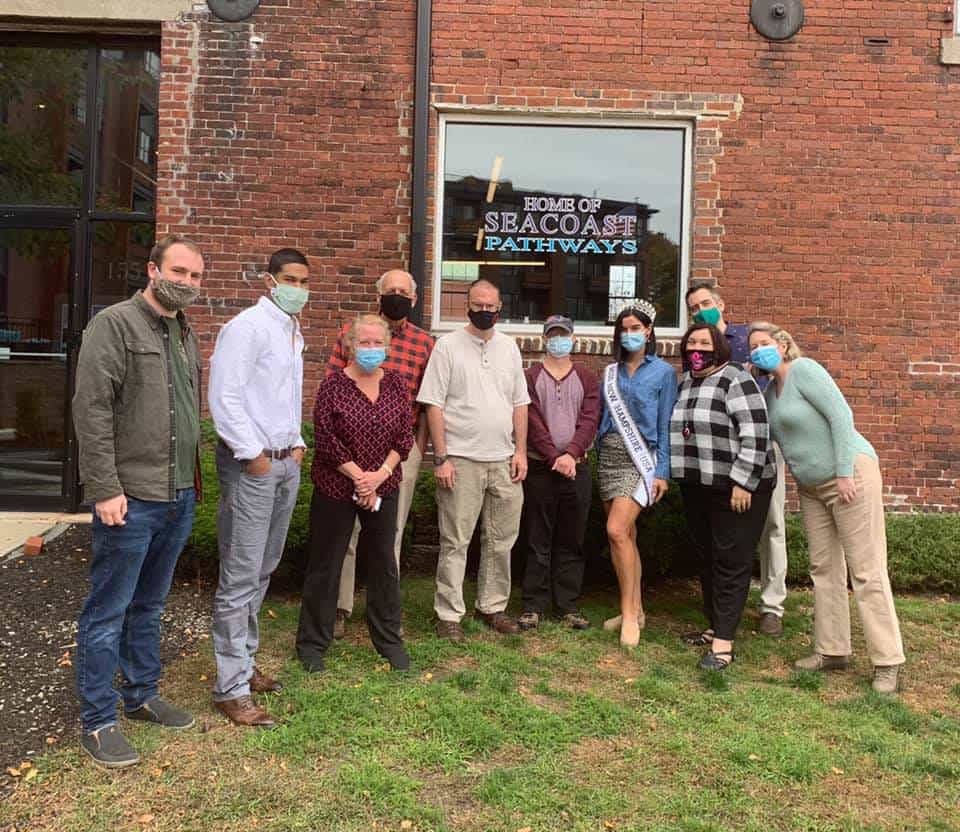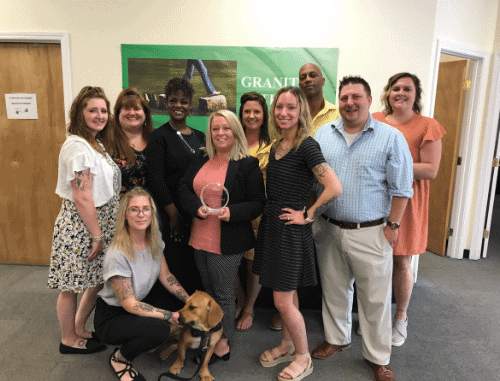New Season, Same Headwinds

September 20, 2021
Fall is just about here. Students are back at school. But while fresh beginnings abound, much remains unchanged. The COVID pandemic rages on, due to virus mutations and variants that have outpaced vaccination rates among Americans. Other stubborn realities remain in our economic environment as well. The long-standing wage and opportunity disparity between women and men refuses to budge. Notwithstanding some notable shifts in post-secondary school enrollment and graduation rates, the job and pay results for women are not improving in any meaningful sense.
On average, women continue to earn significantly less than men, at only 82.3% of each dollar earned by men in 2020, according to the US Bureau of Labor Statistics. The gap is wider for women of color. While the percentage has improved from the 57% earned in 1973, it is incongruous with women’s gains in education and workforce representation since then. Women of every race and ethnicity still earn less than their male counterparts at every level of educational attainment. Black and Latina women with a bachelor’s degree earn only 65% of their male counterparts. And Black women with advanced degrees earn only 70% of white men with those degrees.
Clearly, educational attainment has not generated a corresponding wage attainment for women. This financial deficit for women is compounded by the fact that so many women are tasked with raising children on their own. In 2019, there were 15.6 million single mother headed households; this is 3 times the number in 1960! It is estimated that 80% of all single parent households are currently headed by women, according to US Census data. Further, 64% of millennial moms reported at least one out-of-marriage child, according to Johns Hopkins researchers.
And, COVID certainly hasn’t alleviated this quite challenging economic situation women face. The economic turmoil fueled by the pandemic and stay-at-home policies has led to a 33-year low for women’s labor force participation as women take on caretaker roles at home due to remote schooling. In fact, around 10 million US mothers living with their own school-age children were not actively working in January of this year—1.4 million more than during the same month last year, according to the U.S. Census Bureau. When women do return to the workforce, they may face the “unemployment penalty”, the lower wages typically observed when people return to work from any period of unemployment. Because of this, COVID may seriously impact the gender pay gap for years to come.
Against this backdrop, it was recently reported in the Wall Street Journal that men are falling behind women in college education and that roughly three-fourths of pandemic-driven dropouts were men. There was much alarm about the numbers. According to the National Student Clearinghouse, however, the male-dominated decline was almost entirely confined to community colleges. The data also show male enrollment in four-year colleges dropped more from 2018 to 2019, before the pandemic, than from 2019 to 2020.
Despite the pre- and post-pandemic decline in male higher ed enrollment, men continue to dominate in professions that offer the highest salaries for recent graduates. In addition, there are many more male-dominated working-class fields for which no degree is necessary that pay higher wages than most female-dominated fields, with or without required credentials and degrees. Here, think construction and the trades as compared to teaching and direct care.
The fact that the male-female wage gap remains large after more than four decades in which women outnumbered men in college strongly suggests that for women, college alone still offers a very narrow path to economic wellbeing. Today, this pay disparity remains even when all compensable factors are controlled, meaning that women are still being paid less than men due to no attributable reason other than gender.
Whatever circumstances that may have once excused or justified men being paid more than women no longer exist. There is simply no rationale for the disparity in pay and opportunity for women, and its persistence should be a concern for all of us.
At The Fedcap Group, we keep track of gender pay differentials and ensure equity and equal opportunity for everyone. Across our companies, and within Corporate Services, women and men are on parity for seniority, leadership positions, and pay.
The time to remove the barriers and diminish the headwinds women face is now.
Nueva Temporada, Los Mismos Vientos en Contra
20 de septiembre de 2021
El otoño está a punto de llegar. Los estudiantes están de vuelta en la escuela. Pero si bien abundan los nuevos comienzos, mucho permanece sin cambios. La pandemia de COVID continúa, debido a mutaciones y variantes del virus que han superado las tasas de vacunación entre los estadounidenses. Otras realidades tenaces también permanecen en nuestro entorno económico. La disparidad salarial y de oportunidades de toda la vida entre mujeres y hombres se niega a ceder. A pesar de algunos cambios notables en las tasas de matriculación y graduación de la escuela preparatoria, los resultados laborales y salariales de las mujeres no están mejorando en ningún sentido serio.
En promedio, las mujeres continúan ganando significativamente menos que los hombres, con solo el 82.3% de cada dólar ganado por los hombres en 2020, según la Oficina de Estadísticas Laborales de los Estados Unidos. La brecha es más amplia para las mujeres de color. Si bien el porcentaje ha mejorado desde el 57% ganado en 1973, esto es incongruente con los avances de las mujeres en educación y representación de la fuerza laboral desde entonces. Las mujeres de todas las razas y etnias todavía ganan menos que sus homólogos masculinos en todos los niveles de logro educativo. Las mujeres negras y latinas con una licenciatura ganan solo el 65% de sus homólogos masculinos. Y las mujeres negras con títulos avanzados ganan solo el 70% de lo que ganan los hombres blancos con esos títulos.
Es evidente que el nivel educativo no ha generado un nivel salarial que corresponda con él logrado por las mujeres. Este déficit financiero para las mujeres se ve agravado por el hecho de que muchas mujeres tienen la tarea de criar a sus hijos por su propia cuenta. En 2019, había 15.6 millones de hogares encabezados por madres solteras; ¡esto es 3 veces más del número en 1960! Se estima que el 80% de todos los hogares con un uno solo de los padres, están actualmente encabezados por mujeres, según datos del Censo de los Estados Unidos. Además, el 64% de las madres “millennial” reportaron al menos un hijo fuera del matrimonio, según investigadores de Johns Hopkins.
Y, COVID ciertamente no ha aliviado la situación económica tan desafiante que enfrentan las mujeres. La confusión económica alimentada por la pandemia y las políticas de quedarse en casa ha llevado a un mínimo periodo de 33 años, para la participación de las mujeres en la fuerza laboral; a medida que las mujeres aceptan roles de cuidadoras en el hogar debido a la escolarización remota. De hecho, alrededor de 10 millones de madres estadounidenses que viven con sus propios hijos en edad escolar no estaban trabajando activamente en enero de este año, 1.4 millones más que durante el mismo mes del año pasado, según la Oficina del Censo de los Estados Unidos. Cuando las mujeres regresan a la fuerza laboral, pueden enfrentar la “penalización por desempleo”, los salarios más bajos que generalmente se observan cuando las personas regresan al trabajo después de cualquier período de desempleo. Debido a esto, COVID puede afectar seriamente la brecha salarial de género en los años venideros.
En este contexto, recientemente se informó en el Wall Street Journal que los hombres se están quedando atrás de las mujeres en la educación universitaria y que aproximadamente tres cuartas partes de los desertores escolares impulsados por la pandemia eran hombres. Hubo mucha alarma sobre los números. Sin embargo, según el National Student Clearinghouse, la disminución dominada por los hombres se limitó casi por completo a los colegios comunitarios. Los datos también muestran que la matrícula masculina en universidades de cuatro años cayó más del 2018 al 2019, antes de la pandemia, que del 2019 al 2020.
A pesar de la disminución antes y después de la pandemia en la matrícula masculina de educación superior, los hombres continúan dominando en las profesiones que ofrecen los salarios más altos para los recién graduados. Además, hay muchos más campos de clase trabajadora dominados por hombres para los cuales no se necesita ningún título que paguen salarios más altos que la mayoría de los campos dominados por mujeres, con o sin credenciales y títulos requeridos. Aquí, pensemos en la construcción y los oficios manuales en comparación con la enseñanza y el cuidado directo.
El hecho de que la brecha salarial entre hombres y mujeres siga siendo grande después de más de cuatro décadas en las que las mujeres superaron en número a los hombres en la universidad, sugiere fuertemente que, para las mujeres, la universidad por sí sola todavía ofrece un camino muy estrecho hacia el bienestar económico. Hoy en día, esta disparidad salarial se mantiene incluso cuando se controlan todos los factores compensables, lo que significa que a las mujeres todavía se les paga menos que a los hombres debido a ninguna razón atribuible que no sea el género.
Cualesquiera que sean las circunstancias que alguna vez hayan excusado o justificado que a los hombres se les pague más que a las mujeres ya no existen. Simplemente no hay razón para la disparidad en el salario y las oportunidades para las mujeres, y su persistencia debería ser una preocupación para todos nosotros.
En The Fedcap Group, hacemos un seguimiento de las diferencias salariales de género y garantizamos la equidad y la igualdad de oportunidades para todos. En todas nuestras empresas, y dentro de los Servicios Corporativos, tanto las mujeres como los hombres están en paridad por la antigüedad, los puestos de liderazgo y el salario.
El momento de eliminar las barreras y disminuir los vientos en contra que enfrentan las mujeres es ahora.









